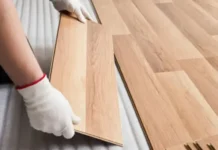Using a Waterproof Pillow Protector like the ones we sell at Heavenly Bedding can protect your Hypoallergenic Pillow Covers from dirt, dust, and moisture that can get trapped inside regular pillows. However, it’s important to follow the manufacturer’s instructions carefully when caring for your Waterproof Pillow Protector to ensure that it will continue to protect your pillow covers throughout its lifespan. Here are some helpful tips you should keep in mind when caring for your Waterproof Pillow Protector.
Machine Washing
Regularly washing your waterproof pillow protector will ensure that it always remains in good condition. To wash your pillow protector, simply put it into a standard load of laundry on a delicate setting. This pillow protector can also be hand washed with cool water, but make sure that it’s always placed in a lingerie bag or another cloth bag first so that it doesn’t tear during washing. After you’ve removed your waterproof pillow protector from the washer, make sure that it dries completely before storing it away. If there are any wrinkles in your waterproof pillow protector after drying, use an iron set to low heat and iron them out until they disappear. If you don’t have an iron available, then hang up your waterproof pillow protector until any wrinkles have disappeared naturally.
Hand Washing
No matter how careful we are, accidents happen. If you’ve used a waterproof pillow protector and it becomes stained or smells, don’t fret: water is not going to harm it. Just hand wash it with mild detergent (or baby shampoo) in cold water. You can hang dry or throw it in the dryer on low heat. Make sure to use gentle cycle settings if you have an older machine. When drying, make sure that your pillow protector doesn’t touch anything else—that could cause damage! And remember: Don’t iron your waterproof pillow protector! The heat will ruin its waterproof properties.
Dryer Bedding Care
After an extended period of time in use, a pillow protector may require cleaning. It is important to avoid dryer sheets when caring for waterproof pillow protectors; doing so can compromise its durability. Instead, wash hypoallergenic pillow covers and waterproof pillow protectors in warm water with mild detergent before drying on low heat. Let items air-dry naturally (in other words, don’t put them back in a dryer) after washing—this will help maintain their longevity. If they are still dirty or smelly after laundering, it may be necessary to clean them again. This process should be repeated as needed until they are thoroughly clean.
Removing Dust Mites
Dust mites may not be able to kill you, but they’re still a concern—and plenty of people are allergic. To keep dust mites at bay, dust and vacuum often, use an air purifier, and use hypoallergenic pillow covers. Of course, regular laundering of bedding will help with hypoallergenic pillows as well as protectors. Wash them in hot water (130 degrees Fahrenheit) every two weeks or so. You can also wash them in hot water every week if you have other members of your household who don’t have allergies.



































































